
The Fall of the House of Usher (1928) is a short silent horror film adaptation of the 1839 short story "The Fall of the House of Usher" by Edgar Allan Poe. The movie was co-directed by James Sibley Watson and Melville Webber, and starred Herbert Stern, Hildegarde Watson, and Melville Webber. It tells the story of a brother and sister who live under a family curse. An avant-garde experimental film running only 13 minutes, the visual element predominates, including shots through prisms to create optical distortion. There is no dialogue in the film, though one sequence features letters written in the air moving across the screen.

William Joseph Martin, formerly Poppy Z. Brite, is an American author. He initially achieved fame in the gothic horror genre of literature in the early 1990s by publishing a string of successful novels and short story collections. He is best known for his novels Lost Souls (1992), Drawing Blood (1993), and Exquisite Corpse (1996). His later work moved into the genre of dark comedy, with many stories set in the New Orleans restaurant world. Martin's novels are typically standalone books but may feature recurring characters from previous novels and short stories. Much of his work features openly bisexual and gay characters.

"The Fall of the House of Usher" is a short story by American writer Edgar Allan Poe, first published in 1839 in Burton's Gentleman's Magazine, then included in the collection Tales of the Grotesque and Arabesque in 1840. The short story, a work of Gothic fiction, includes themes of madness, family, isolation, and metaphysical identities.

Caitlín Rebekah Kiernan is an Irish-born American paleontologist and writer of science fiction and dark fantasy works, including 10 novels, series of comic books, and more than 250 published short stories, novellas, and vignettes. Kiernan is a two-time recipient of both the World Fantasy and Bram Stoker awards.

LGBT themes in horror fiction refers to sexuality in horror fiction that can often focus on LGBTQ+ characters and themes within various forms of media. It may deal with characters who are coded as or who are openly LGBTQ+, or it may deal with themes or plots that are specific to gender and sexual minorities.

House of Usher is a 1960 American gothic horror film directed by Roger Corman and written by Richard Matheson from the 1839 short story "The Fall of the House of Usher" by Edgar Allan Poe. The film was the first of eight Corman/Poe feature films and stars Vincent Price, Myrna Fahey, Mark Damon and Harry Ellerbe.
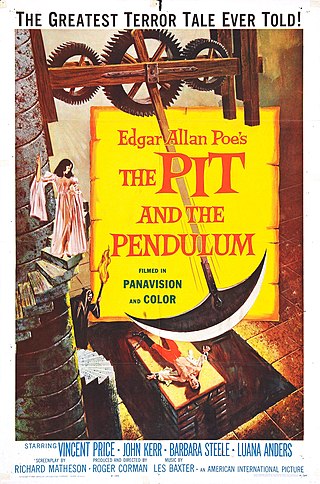
The Pit and the Pendulum is a 1961 horror film directed by Roger Corman, starring Vincent Price, Barbara Steele, John Kerr, and Luana Anders. The screenplay by Richard Matheson was loosely inspired by Edgar Allan Poe's 1842 short story of the same name. Set in sixteenth-century Spain, the story is about a young Englishman who visits a forbidding castle to investigate his sister's mysterious death. After a series of horrific revelations, apparently ghostly appearances and violent deaths, the young man becomes strapped to the titular torture device by his lunatic brother-in-law during the film's climactic sequence.

The Fall of the House of Usher is a 1928 French horror film directed by Jean Epstein, one of several films based on the 1839 Gothic short story The Fall of the House of Usher by Edgar Allan Poe.
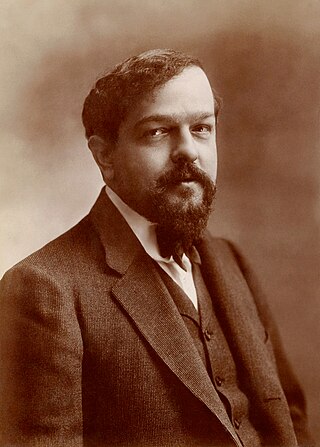
La chute de la maison Usher is an unfinished opera in one act by Claude Debussy to his own libretto, based on Edgar Allan Poe's 1839 short story "The Fall of the House of Usher". The composer worked on the score between 1908 and 1917 but it was never completed.

Every Heart a Doorway is a fantasy novella by American writer Seanan McGuire, the first in the Wayward Children series. It was first published in hardcover and ebook editions by Tor.com in April 2016.
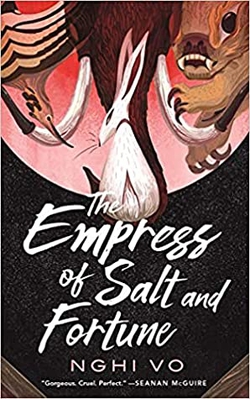
The Empress of Salt and Fortune is a 2020 fantasy novella by American writer Nghi Vo. It is the first book of the Singing Hills Cycle and was followed by a sequel, When the Tiger Came Down the Mountain, later that same year. The plot focuses on a cleric who listens to stories about the recently deceased empress. It won the 2021 Hugo Award for Best Novella and was nominated for the 2021 Locus Award for Best Novella.

The Fall of the House of Usher is an American gothic horror drama television miniseries created by Mike Flanagan. All eight episodes were released on Netflix on October 12, 2023, each directed by either Flanagan or Michael Fimognari, with the latter also acting as cinematographer for the entire series.

Tread of Angels is a 2022 fantasy novella by Rebecca Roanhorse. It is a murder mystery set in a fictional Old West town which is inhabited by the descendants of both angels and demons.

Nettle & Bone is a 2022 fantasy novel by Ursula Vernon, writing as T. Kingfisher. The novel has been described as a dark fairy tale. It won the 2023 Hugo Award for Best Novel and was nominated for the 2023 Locus Award for Best Fantasy Novel, and the Nebula Award for Best Novel of 2022.

A House with Good Bones is a 2023 Southern Gothic horror novel by Ursula Vernon, writing under the pen name T. Kingfisher. The novel centers on Samantha Montgomery, a woman who experiences strange events when she returns to her ancestral North Carolina home.

Thornhedge is a 2023 novella by Ursula Vernon, writing under the pen name T. Kingfisher. The novella is a reimagining of the story of Sleeping Beauty.

Into the Riverlands is a 2022 fantasy novella by Nghi Vo. It is the third published entry in the Singing Hills Cycle. Each novella can serve as an entry point to the series or as a standalone tale.
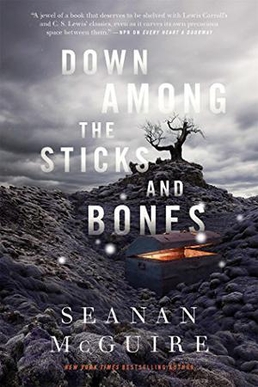
Down Among the Sticks and Bones is a 2017 fantasy novella by Seanan McGuire. It is the second book in the Wayward Children series and explores the history of two characters, Jack and Jill, from the previous book, Every Heart a Doorway.

Beneath the Sugar Sky is a 2018 fantasy novella by American author Seanan McGuire. It is the third book in the Wayward Children series and introduces Rini Onishi, the child of Sumi, who was murdered in the series's first book, Every Heart a Doorway.
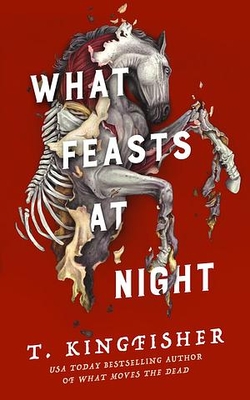
What Feasts at Night is a 2024 horror novel by Ursula Vernon, writing under the pen name T. Kingfisher. The novel is a standalone sequel to the 2022 novella What Moves the Dead.




















